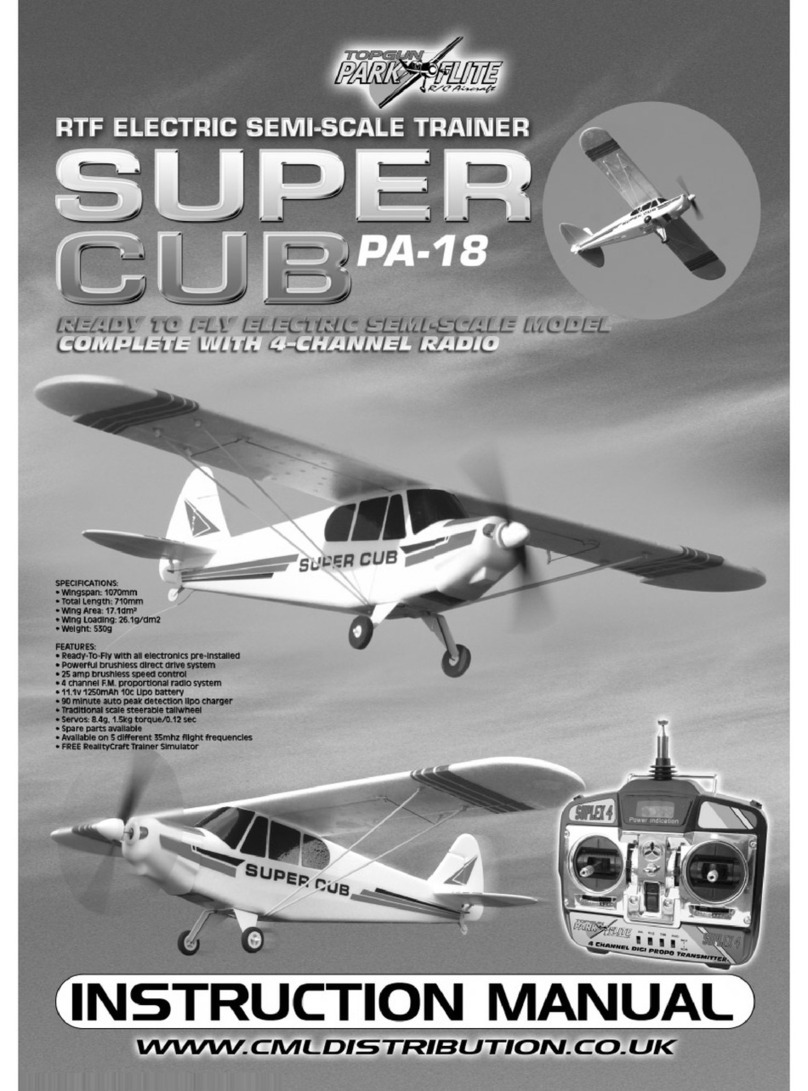2
Mirage 2000
RTF Model
INSTRUCTION MANUAL
Top Gun Park Flite are proud to present this high
performance ducted fan sport scale model of the
Mirage 2000 We feel that this model emulates the
style, performance and character of its full size
counterpart.
Supplied as a Ready to Fly package with transmitter,
LiPo flight battery and charger, ARTF or Airframe
only, this model has been designed with the utmost
care and attention to detail to produce a light
weight, strong, and realistic looking model
aeroplane with excellent flying characteristics.
This model is a high performance miniature aircraft
that allows intermediate to advanced model pilots to
perform both scale and aerobatic manoeuvers. The
light weight, large wing area and delta wing design
allow the model to fly both fast and slow, with high
speed rolls and tight turns while maintaining full
control.
These instructions assume a reasonable level of
competence for both building and flying and we
recommend that the model is flown at a recognised
club with frequency control measures and suitable
third party insurance.
The owner – pilot of this model should take note of
regulations, and local bylaws before flying this
aircraft.
Please take time to read through these instructions
before commencing assembly. We list operations in
order of works to reduce the risk of damage during
assembly.
Please read through the warnings before use.
A 11.1V 1300 mAh lithium polymer (LiPo) battery and
charger is included as part of this package and
these cells must be operated with care to prevent
the risk of fire.
LiPo Batteries are soft cased and can be easily
damaged by sharp items, puncturing of the soft
casing can cause fires and we recommend that they
are stored and handled carefully.
Use only a LiPo rated charger, set to a maximum of 3
cells (11.1v) and no more than 1 amp charge
current.
Remove battery from the aircraft and charge on a
non flammable, non conductive surface
Due to continual and ongoing product development
the parts shown in the manual may differ from those
supplied.
Congratulations on purchasing the Mirage 2000 RTF




























